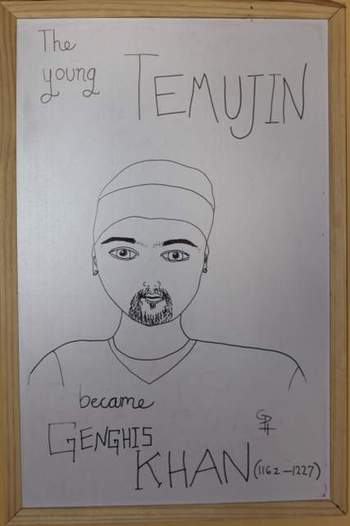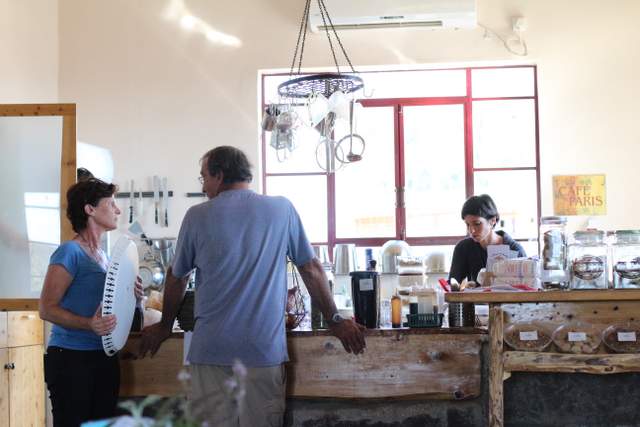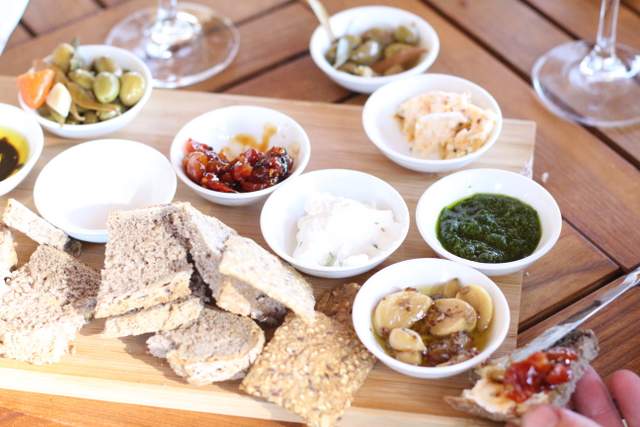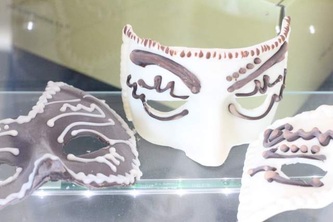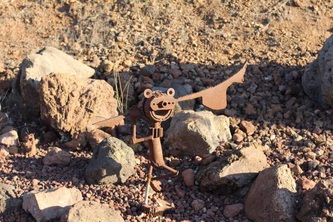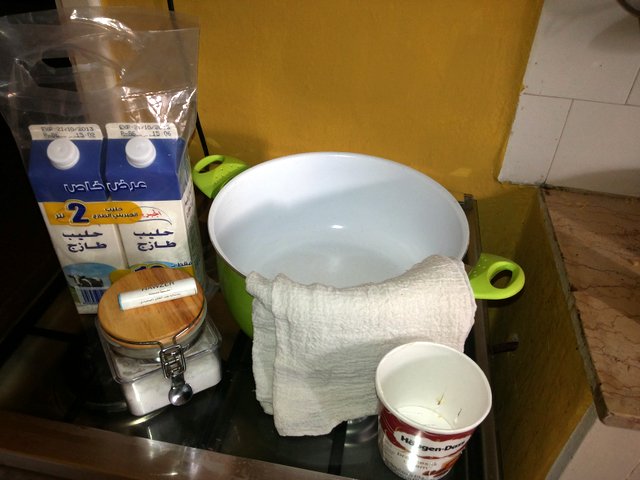The Blender Story
This is part of the Don’t Be Like Me series, a new column of mostly true stories illustrating what not to do in life.Email me if you’d like to contribute. We all have a story.
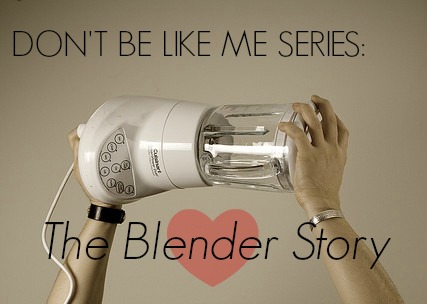
When Prince Charming recently came home from a three day trip to Gaza, he was all “Agh… this really stressful thing happened…. someone almost got arrested and I lost my right foot in a freak accident, do you still love me?”
And I was like “AHHHH! That sounds horrible but this blender, and arg, and I am so frustrated. Pay attention to my needs first and then I’ll try to listen to you better.”
Prince Charming: Ok, what’s the problem? (I love him so much.)
Me: I should have used the food processor for this but I don’t know how to use the d____ thing and I f-ing hate it!
(I’m attempting to use a butter knife, spatula, and chopstick simultaneously to dig the cementing pie-gel from under the sharp blades of the vitamix blender.)
Me: I HATE COOKING!!!
Prince Charming: You know, I can show you how to use the food processor.
Me: No! Cooking shouldn’t be like that! You should’t have have to assemble a complicated piece of machinery to cook! And then you have to wash it. And it’s so dangerous! All those moving parts. Ah! I want to push a button and do it! Cooking should be, like, easy. If I can’t figure out how to do it by myself, it isn’t worth it! AHHHHHH!!!!!!!!!!! WHY IS MY LIFE SO HARD???
Charming: So you didn’t have to learn how to use the oven? You just naturally know how to do everything?
Me: You probably have a point but I really don’t want to tell you that right now. That is why I said that first part in a quiet Shy Ronnie voice AND THIS IN MY LOUD YELLING VOICE: ITS NOT THAT I KNOW HOW TO DO EVERYTHING, IT’S THAT WITH A LITTLE EXPERIMENTATION, YEAH, I CAN FIGURE ALMOST EVERYTHING OUT. BUT I’VE MESSED WITH THE FOOD PROCESSOR FOR LIKE TWO HOURS AND I STILL CAN’T FIGURE IT OUT. I DON’T WANT TO NEED HELP, I DON’T!!!!! OK?
You can probably see where I am going with this. It’s crazy to think you can do it all on your own. No one ever accomplishes anything magnificent all on their own, not even a vegan pie crust. If we look around, we are generally surrounded by kind, supportive, one-footed or two-footed people who are willing and eager to help us learn what we need to learn, go where we need to go, and be the people we need to be.
Don’t be like me and try to do it all on your own without help. We are all in this together.
ADDENDUM: Don’t worry, Prince Charming did not really lose his foot. That was a metaphor for an extremely stressful experience that took a toll on him. Thankfully, not THAT much of a toll.
Pie crust-covered hugs (the best kind),

(photo credit: http://www.flickr.com/photos/lintmachine/2987986325/)
Why Selling Art is an Act of Compassion

I was recently talking to a fellow artist — a photographer– and I told her that I looked at her photos when I was having a bad day and needed to feel better.
her response was incredulous. “do you really mean that? or are you just saying that because you’re my friend?”
I couldn’t believe she was asking me if I really meant what I said. Her work is stunning. Her business is growing. Her clients are overjoyed. Is she still maturing as a photographer? Yes. She’s still finding her voice and vision. But her work is already way above that of entry-level professional photographers.
Like many artists who are in a similar stage, she is having trouble charging what her services are really worth. She underestimates her own abilities, which is something I frequently see in my work as an artist coach. This underestimation undercuts her ability to market and sell her services.
There’s something she doesn’t understand, and it is something many artists don’t understand. This something is the single most important thing I can tell an artist about selling art:
selling art is an act of compassion.
It’s not about you. It’s not about your skills, or lack thereof. It’s not about your fears about not being able to fulfill your artistic vision. Every artist has growing to do.
SELLING ART IS ABOUT THE EFFECT YOUR ART HAS ON THOSE WHO EXPERIENCE IT.
And that effect is a powerful one. Art makes people feel something. As humans, we need to feel. We need to feel strong emotions of passion, excitement, surprise, shock, connection, serenity, joy, rage, and the whole gamut. Perhaps if you truly understood the affect your art has on people (not everyone perhaps, but the special group who “gets it” who is it your job to find) then you would see what an act of compassion it is to create and sell art.
There is no other industry or field that can claim such a noble purpose. Some people think that selling a utilitarian item – a washing machine, for example – is easier than selling art, because a washing machine does something we all need – it cleans our clothes. We all need clean clothes, right?
More than clean clothes, we all need beauty in our lives. Beauty makes us forget our troubles for a moment, and it can also sooth our wounds, acting as a balm for heart ache. In slums around the world, people don’t own washing machines. They walk around in dirty clothes. But take a look at photos of these slums, and you’ll see the satellites and television antennae. Somehow, they found a way to bring art into a place missing most basic necessities.
All great art comes out of love, not just for ourselves, but for others. Let’s remember that when we sell our art, we are offering one of the most numinous experiences a human being can have. That is priceless, of course.
Yet human psychology teaches us that people value what they pay for more than what they get for free. Value, or benefit to the viewer’s life increases when he or she pays for art (with money or something else of value).
Therefore, not only is making and sharing art an act of compassion, but selling art is an even greater act of compassion.
By pricing your art well and communicating clearly about it (which is all selling is), you as an artist are actually increasing the amount of joy your customer can feel about your art.
I hope this is starting to sink in. By selling your art at the right price, you are effectively improving the quality of your customer’s life experience more than even meeting his or her basic needs would. Don’t believe it when someone tells you humanity’s need for transcendence is less than humanity’s need for basic necessities. If that were true, the world wouldn’t be at war over ideas. While there is violence over access to basic resources, world peace is much more threatened by ideas like culture, religion, equality, love, and freedom. We fight hardest for the things that bring us a sense of connection and transcendence.
I believe if art was more valued in the world, there would be more peace in the world. Art brings people together. Art lifts people up, making them feel better when they otherwise might turn to violence. The value of art is its great potential to bring world peace.
As artists, it’s our jobs to be the first to value art. The way we value art is by creating it and selling it. Have compassion on the world by selling your art.
♥ ♥ ♥ ,

(Heart image credit :http://www.flickr.com/photos/bestrated1/371032725/)
What I Gained and Lost in the Packing Lust Move
Welcome to the new Packing Lust! I've had a challenging time (adventurous is my preferred word) giving the website a complete makeover and moving it from Weebly to Wordpress. I learned a lot in the process, so overall it was a positive experience. I couldn't have done the move without the help of a Bangladeshi technical whiz who goes by the moniker Genius Fred. Thank you, Mr. Ferdoush. Wordpress is a much more powerful platform that allows me to self-host my blog and do much more with it than I could with Weebly. I'm gaining flexibility and control over the design and user experience of Packing Lust. However, I had to make one major sacrifice to move to Wordpress.
I lost your comments.
I wasn't able to import your beautiful words of support and encouragement to the new site. They are gone. However, it's very important to me that you know how much your comments mean to me, even now, when they are gone from individual posts. Through the year and a half that Packing Lust as been around, your comments made me feel connected, supported, and encouraged.
I want to give special thanks to Natalie, Maria, Calli, Lucia, Mo, Trog, Special K, Dan Kenney, Philip Harold, Grandpa, John Tolhurst, Rewa, and all of you who took the time to comment (for your privacy, I listed your names as you chose to in your comments). Special thanks to Natalie and Maria who would win first prize for blog support if I was giving out prizes. Knowing that all of you are keeping up with what we are doing on Packing Lust means the world to me. Each time there is a comment on the blog, I excitedly click to see it and my heart is warmed by your words.
Please keep commenting on the new blog if you enjoy the writing and photos. Thanks so much!
What’s More Fun Than Being a “Serious” Artist?
Answer: Being a fun artist.
That is, having fun creating your art. If what you are working on isn’t something that you would not read/watch/view/experience during your weekend chill time, stop! Do something fun.
One of my favorite artist-writers, Austin Kleon, suggests:
Draw the art you want to see, start the business you want to run, play the music you want to hear, write the books you want to read, build the products you want to use – do the work you want to see done.
I wholeheartedly agree with Austin on this one. You've got to be inspired by what you already love. Or, you’ve got to create something that you have looked for, and not found. Ideally, a combination of the two.
AND HEY, YOU CAN BE AS “SERIOUS” AS YOU WANT TO BE.
If that’s truly who you are. If you are working on an anomic novel where the main character’s journey is one long walk through the rain, ending with her suicide, that’s totally cool. As long as that’s the sort of fiction you read when you are trying to relax after a long day.
So have more fun as an artist by creating the sort of things that you enjoy. I know that if you make the sort of art that is fun for you to consume, your work can find an audience.
Take action now by making a list of the books you are reading and the art you love. Compare this list with the projects you are working on. If there are no similarities, you may want to rethink that project.
WHAT DO YOU THINK? LET ME KNOW IN THE COMMENTS.

How Artists and Writers are Usually the Opposite of Driven Business Types
 Today I got an update from Jonathan Fields of Good Life Project. He interviews all kinds of people who are changing the world in a meaningful way. I’m a fan of his show, and read the bio of the man he recently interviewed, Chip Conley. Here are a couple snippets.
Today I got an update from Jonathan Fields of Good Life Project. He interviews all kinds of people who are changing the world in a meaningful way. I’m a fan of his show, and read the bio of the man he recently interviewed, Chip Conley. Here are a couple snippets.
“As the founder of the legendary hotel group, Joie de Vivre, he shattered the status quo for excellence in hotel leadership and customer experience.”
and
“Chip was riding the crest of the wave. Then things went south…
With his success as an author he began traveling the country speaking to packed houses. But the hellacious schedule found him undernourished both creatively and physically. While on stage his body failed him in the most profound way. He literally died on stage. Chip’s heart had to be restarted several times in the amublance to the hospital.
He made it through, but it was a wake-up call. Conley wasn’t here just to build an empire, he was here to create meaning.”
The thing is, we’ve heard this story so many times. Ambitious business person experiences stress-related health problems and realizes life is about more than making money.
When artists, dreamers, and creatives hear this story, we simply can’t relate.

The “lesson” seems obvious. We start out in life instinctively knowing that this journey isn’t about empire-building, but rather, about meaning-building. In fact, we may wish we could focus a little more on making money — like Chip Conley before his heart attack.
However, what the artist instinctively knows about life is a huge gift, and also a massive head start. Some people need a heart attack to slow them down and get them to focus on what’s important. For others, it’s natural.

The challenge for artists, creatives, and dreamers who want to make meaning AND money is to focus on consistently building habits, or rituals, that combine both business skills and heart-based creation.
The way to start is through the 12 Rituals for Art + Income.
Genghis Khan Golan
We Came, We Saw, We Ate Chocolate
 Our planned road trip for this vacation.
Our planned road trip for this vacation.
The Packing Story
Hitting the Road
How to Make Jibneh (Guest Post by Prince Charming)
How to Make Jibneh by Prince Charming
Simple White Cheese
Ingredients
Instructions
- Heat two liters of milk in a pot until it is almost too hot to put you finger in. Don’t let it boil. turn off the heat.
- Immediately add ¼ cup (125 grams or so) of white vinegar or the juice of half a lemon, mix.
- Let sit for 20 minutes until the curd and whey have separated (when you see white chunks of cheese floating in yellowish liquid, it is done)
- Strain this through a cheesecloth. I usually tie this to my kitchen faucet and let it drain overnight, but if you want to eat it immediately just ball the cheese in the cloth and press it until most of the whey is out.
- Add a couple pinches of salt and mix.
- If you want paneer or queso blanco, you can press the cheese slightly using heavy cans or jars set on top of the cheese in a carton. Here is how it looks pressed:
Sawtain! (Double Health = Bon Appetit!) *** Al albak (right back atcha -- literally "to your heart") Prince Charming
3 Ways to Take Control of Your Time
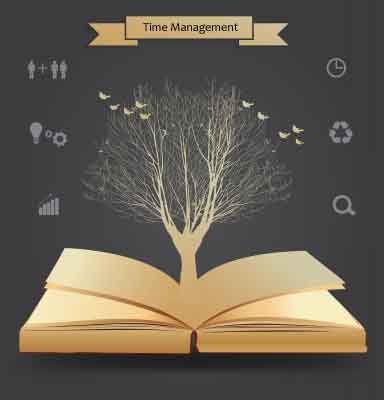
The 4th ritual for art and income is turning your schedule into your own personal fairy tale. That means owning your time. It means not letting someone else take the reins of your day. It means having time to do the things you want and need to do — making art, working on your career or business, spending time with the people you love, and anything else you need to do.It means doing what’s important without feeling guilty or like you are forgetting a commitment.
Without further ado, here are three ways to take control of your time.
 1.
Find your soul-mate calendar situation. This love relationship doesn’t have to last forever, but it does need to be exclusive. Settle on one calendar set-up, and stick with it. I prefer Google calendar, but if a beautiful notebook with touchable, soft pages is what works for you, choose that. It has to be something you will use.
1.
Find your soul-mate calendar situation. This love relationship doesn’t have to last forever, but it does need to be exclusive. Settle on one calendar set-up, and stick with it. I prefer Google calendar, but if a beautiful notebook with touchable, soft pages is what works for you, choose that. It has to be something you will use.
2.
Practice three ways to politely decline invitations or demands. If your default is “sure!” or “yes!” when someone asks you for something, it’s time to change your default response to demands on your time to something like: “No thanks.” “Let me think about it.” “Maybe…. can I get back to you?” This is the key to owning your time. We all have the same 24 hours in a day, and those who make the most of it spend those 24 hours doing activities they enjoy and that move them closer to their goals and desires.
3.
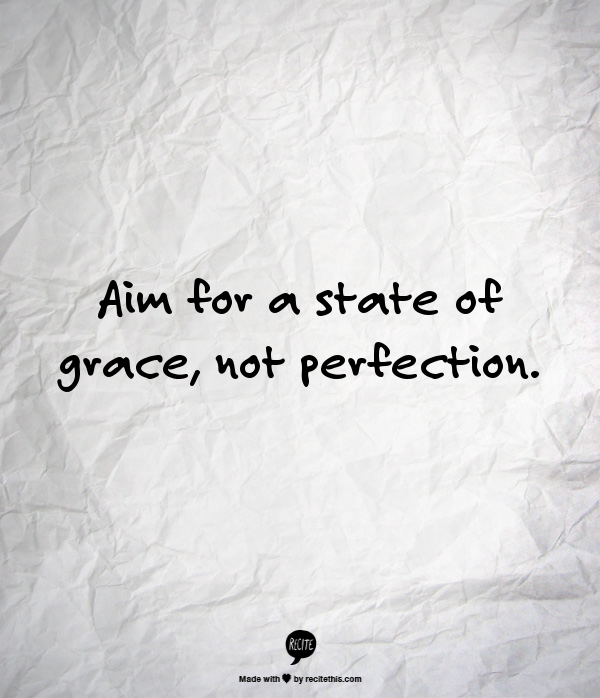 Aim for a state of grace, not perfection. No one, least of all those with the gifts of imagination and creativity, is perfect at managing their time. We all forget appointments and commitments. Grace means saying sorry when you let someone down by forgetting a
commitment. Grace means forgiving yourself and moving on when you let yourself down. Grace means high standards and higher levels of kindness to yourself and others.
Take action on idealizing your schedule by asking a few people you admire how they keep track of their commitments. Then create your own unique system so that you can create your ideal schedule.
Aim for a state of grace, not perfection. No one, least of all those with the gifts of imagination and creativity, is perfect at managing their time. We all forget appointments and commitments. Grace means saying sorry when you let someone down by forgetting a
commitment. Grace means forgiving yourself and moving on when you let yourself down. Grace means high standards and higher levels of kindness to yourself and others.
Take action on idealizing your schedule by asking a few people you admire how they keep track of their commitments. Then create your own unique system so that you can create your ideal schedule.






